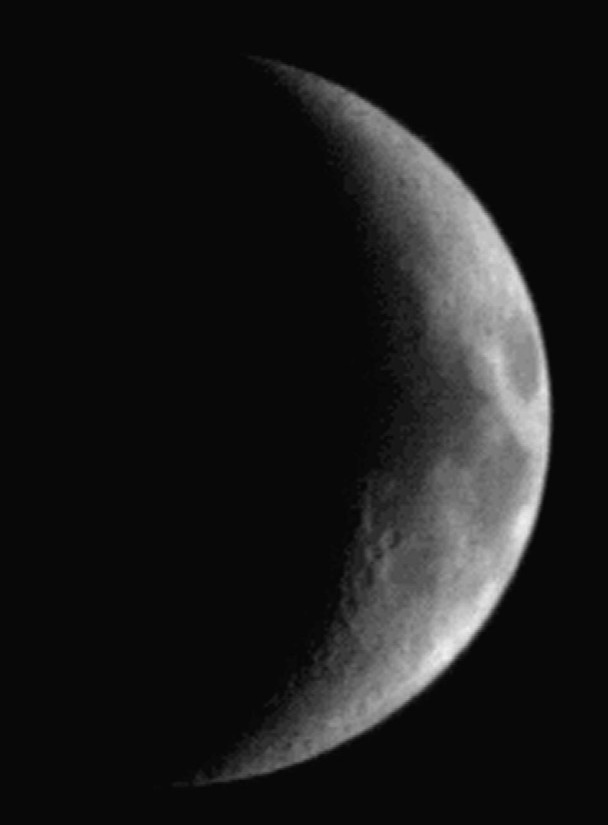[/caption]
UPDATE: The Indian Space Research Organization (ISRO) announced on 11/12 that the 100 km science orbit has been successfully achieved. Congrats to the Chandrayaan-1 team!
India’s space agency released the first picture of the Moon taken by the Chandrayaan-1 spacecraft. While it’s not a superlative image, as Emily Lakdawalla from the Planetary Society blog says, it is a milestone. Emily also explained that this photo has a resolution more than 3,000 times poorer than the eventual science images will have because the camera on Chandrayaan-1 was designed to take images from an a 100-kilometer science orbit (this image was taken on Nov. 4 at 311,200 kilometers away from the Moon). And today, the spacecraft got closer to that final science orbit by firing its engines for 31 seconds, reducing its perigee (nearest distance to the moon) from 187 km to 101 km.
Chandrayaan-1’s orbit is still elliptical, and its apogee (farthest distance from the moon) is now 255 km. In this orbit, Chandrayaan-1, takes two hours and nine minutes to go around the Moon. On Wednesday evening, the Spacecraft Control Centre at Bangalore will issue commands for the spacecraft to fire its engines again to reduce the apogee to 100 km, putting the spacecraft into its final science orbit.
Then, on either Nov. 14 or 15, the Moon Impact Probe will be released. It weighs 35 kg, and once released will take about 25 minutes to impact. It will hit a pre-selected location (Chandrayaan-1 Twitter says to keep an eye on Shackleton Crater), and the primary objective is to demonstrate the technologies required for landing the probe at a desired location on the Moon and to qualify some of the technologies related to future soft landing missions.
Sources: ISRO, The Hindu


Hi, just a small correction. You keep writing Indian Space Agency. It’s actually ISRO (Indian Space Research Organisation)
Perigee and Apogee are not the right words for lunar orbits.
Periselene/Pericynthion and Aposelene/Apocynthion
or we could use the general term Apapsis and Periapsis.
Really makes us proud. Here’s a link with up-to-date news on Chandrayaan. http://www.chandrayaan.bharatchronicle.com
My heartiest congratulation to ISRo scientists & team and off course to the Govt. Of India which has funded this project. Although much more powerful mission has been sent to the moon by men(especially from USA & Russia and lately ESA,Japan , China) . India’s entry into this club will definitely give a boost to these countries as well.People of this world must stand together in their space exploration, this is going to be a gigantic task, finding new celestial bodies, alien life in unknown places is not going to be easy task.
The East Asian moon race with Pakistan is won by India! The rival Pakistan didn’t even try, and I suppose that it will rather support fundamentalistic religious movements than scientific progress (except it will serve that movements).
India’s VISION FOR 2020′ has begun .Launching of Chandrayaan is the first and mightiest step it has taken.Congrats scientists and ISRO members for this success.IT has given hope for the younger generations like us to do further researches and ake our country proud,since it is my aim.
Proud to be an Indian!!
Congrats to ISRO people and Mr.Mylsamy Annadurai(scientist from my state & project director for Chandrayan)!
kya chadrayaan par alians nahi hain.
999